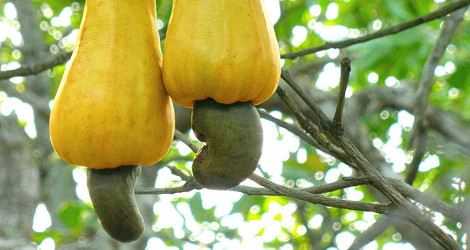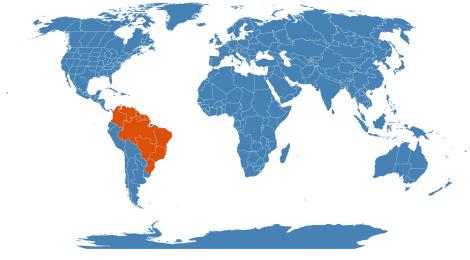Accession Data
Anacardium occidentale
Common Name: Cashew Nut Tree
Family: Anacardiaceae
Country of Origin: northeastern Brazil
Description:
Uses: The Cashew Nut is otherwise known as Venamra or Vrikkaphala in Sanskrit and is used to fulfill a healhty lifestyle. The nut is contains low cholesterol, low fat very beneficial to the heart and rich antioxidants and protein. Cashew nut pacifies agitated Vatha and Kapha. It is great in preventing skin diseases, dysentery, and hemorrhoids. Strengthens hair and nails, and will aid in warm infestation.
Traditionally, extractions with cashew are used to care for oral hygiene. It is used to prevent gingivitis, cavities, periodontal and many other oral infections through it's antimicrobial properties. More studies are being conducted to verify the true potential of these hygienic properties 7.
Accession Data
USDA Zone: 9a-11
Accession #: 200900052
Accession Date: 2009-05-13 00:00:00
Bloom Status: 🪴 Not Flowering
Location: 1311
Quantity: 1
Source: Top Tropicals
Classification
Division: Magnoliophyta
Class: Magnoliopsida
Subclass: eurosid II
Order: Sapindales
Family: Anacardiaceae
SubFamily: Anacardioideae
Flowering Data:
This accession has been observed in bloom on:| Year | Jan | Feb | Mar | Apr | May | Jun | Jul | Aug | Sep | Oct | Nov | Dec | ||||||||||||||||||||||||||||||||||||||||
|---|---|---|---|---|---|---|---|---|---|---|---|---|---|---|---|---|---|---|---|---|---|---|---|---|---|---|---|---|---|---|---|---|---|---|---|---|---|---|---|---|---|---|---|---|---|---|---|---|---|---|---|---|
| 2025 | ||||||||||||||||||||||||||||||||||||||||||||||||||||
| 2024 | ||||||||||||||||||||||||||||||||||||||||||||||||||||
| 2023 | ||||||||||||||||||||||||||||||||||||||||||||||||||||
| 2022 | ||||||||||||||||||||||||||||||||||||||||||||||||||||
| 2021 | ||||||||||||||||||||||||||||||||||||||||||||||||||||
| 2020 | ||||||||||||||||||||||||||||||||||||||||||||||||||||
| 2019 | ||||||||||||||||||||||||||||||||||||||||||||||||||||
| 2018 | ||||||||||||||||||||||||||||||||||||||||||||||||||||
| 2017 | ||||||||||||||||||||||||||||||||||||||||||||||||||||
| 2016 | ||||||||||||||||||||||||||||||||||||||||||||||||||||
| 2015 | ||||||||||||||||||||||||||||||||||||||||||||||||||||
References
- Wikipedia
- Ayurvedic Medicinal Plants
- The Plant List (2013). Version 1.1. Last accessed on Tuesday, April 25, 2017.
- Anacardium occidentale at ARS-GRIN. Last accessed on Tuesday, April 25, 2017.
- Image#00 (cropped) courtesy Abhishek Jacob, 2009 from Wikimedia Commons. Creative Commons Attribution-Share Alike 3.0 Unported. Last accessed on Wednesday, June 21, 2017.
- Anacardium occidentale at Catalogue of Life. Last accessed on Wednesday, June 21, 2017.
- In vitro antimicrobial and cytotoxic effects of Anacardium occidentale and Mangifera indica in oral care . G. Anand, M. Ravinanthan, R. Basaviah, and A. Veena Shetty. J Pharm Bioallied Sci. 2015 Jan-Mar; 7(1): 69–74. Last accessed on Thursday, March 29, 2018.
Images

